Twin Twin Transfusion Syndrome Criteria
Twin twin transfusion syndrome criteria. And 2 the presence of oligohydramnios defined as a maximal vertical pocket of. TTTS affects identical twins or higher multiple gestations who share a common monochorionic placenta. These pregnancies are known as monochorionic.
TTTS is a complication that specifically occurs in identical monozygotic twin pregnancies that share the same egg sac monochorionic that may or may not share the same amniotic sac. In a monochorionic pregnancy identical twins share one placenta afterbirth and a network of blood vessels that supply oxygen and nutrients essential for development in the womb. When there is unequal hemodynamic and amniotic fluid balance there is a risk of twintotwin transfusion syndrome.
Identify and monitor twin pregnancies at risk of adverse outcomes such as twin-to-twin transfusion syndrome TTTS and fetal growth restriction FGR. As in sin-gletons impaired fetal growth can be assessed in twins by comparing biometry and Doppler velocimetry parameters against standards for uncomplicated pregnancy. The shared placenta contains abnormal blood vessels which connect the umbilical cord and circulations of the twins.
Twin anemia polycythemia sequence TAPS is a form of twin-to-twin transfusion syndrome TTTS that can complicate monochorionic twin pregnancies. Twin to twin transfusion syndrome TTTS is a rare condition that occurs during a twin pregnancy when blood moves from one twin the donor twin to the other the recipient twin while in the womb. Ultrasound diagnostic criteria are now based on presentation in the second trimester with discordant amniotic fluid volume oligopolyhydramnios sequence in monochorionic placentation.
Most cases of TTTS present in the early second trimester and are staged according to the Quintero system table 1. Twintotwin transfusion syndrome TTTS occurs typically between 16 and 26 weeks gestation and its diagnosis is based on the sonographic criteria of amniotic fluid discordance. Twin to Twin Transfusion Syndrome TTTS is a disease of the placenta or afterbirth that affects identical twin pregnancies.
1 the presence of a monochorionic diamniotic MCDA pregnancy. 1 the presence of a MCDA pregnancy. The diagnostic neonatal criteria were an intertwin haemoglobin difference of 5 g100 ml and a birthweight discrepancy of 20.
Twin-to-twin transfusion syndrome TTTS also known as feto-fetal transfusion syndrome FFTS twin oligohydramnios-polyhydramnios sequence TOPS and stuck twin syndrome is a complication of disproportionate blood supply resulting in high morbidity and mortality. Monochorionic twin pregnancies are monitored for development of twin-twin transfusion syndrome TTTS with ultrasound examination every two weeks beginning at 16 weeks of gestation and continuing until the mid-third trimester.
TTTS occurs in pregnancies where twins share one placenta afterbirth and a network of blood vessels that supply oxygen and nutrients essential for development in the womb.
When there is unequal hemodynamic and amniotic fluid balance there is a risk of twintotwin transfusion syndrome. TTTS is a serious condition that can complicate 8-10 of twin pregnancies with monochorionic diamniotic MCDA placentation. Twin-to-twin transfusion syndrome TTTS is a rare pregnancy condition affecting identical twins or other multiples. The shared placenta contains abnormal blood vessels which connect the umbilical cord and circulations of the twins. Same-sex twins with a single placenta. Twintotwin transfusion syndrome TTTS occurs typically between 16 and 26 weeks gestation and its diagnosis is based on the sonographic criteria of amniotic fluid discordance. And 2 the presence of oligohydramnios defined as a maximal vertical pocket 2cm in one sac and polyhydramnios defined as a maximal vertical pocket 8 cm in the other sac. What is twin-twin transfusion syndrome TTTS Twin-twin transfusion syndrome also called TTTS or twin to twin transfusion syndrome is a condition in which the blood flows unequally between twins that share a placenta monochorionic twins. TTTS occurs in about 10 to 15 percent of monochorionic diamniotic two amniotic sacs twins.
What is twin-twin transfusion syndrome TTTS Twin-twin transfusion syndrome also called TTTS or twin to twin transfusion syndrome is a condition in which the blood flows unequally between twins that share a placenta monochorionic twins. The diagnostic neonatal criteria were an intertwin haemoglobin difference of 5 g100 ml and a birthweight discrepancy of 20. 1 the presence of a MCDA pregnancy. These pregnancies are known as monochorionic. Polyhydramnios in the recipient twin with a deepest vertical pocket DVP 8 cm prior to 20 weeks and 10 cm after 20 weeks and oligohydramnios in the donor twin with a DVP 2 cm at any gestational. Most anomalies seen in fetuses and neonates who have chronic twin-to-twin transfusion syndrome TTTS represent sequelae of cardiovascular dysfunction or vascular disruption. In a monochorionic pregnancy identical twins share one placenta afterbirth and a network of blood vessels that supply oxygen and nutrients essential for development in the womb.





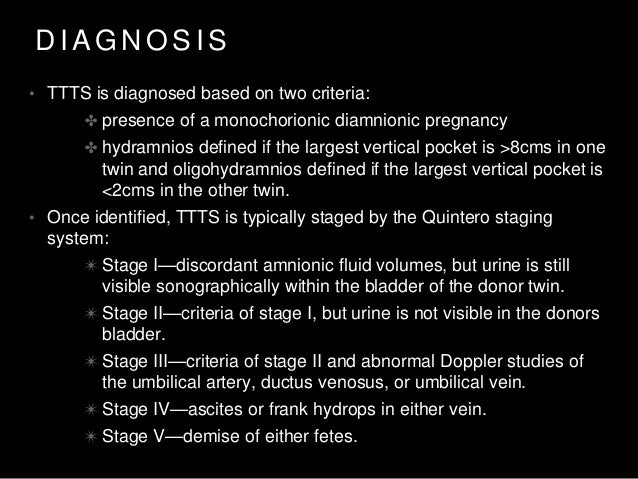

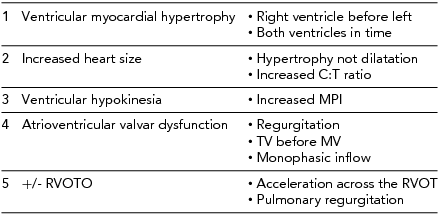




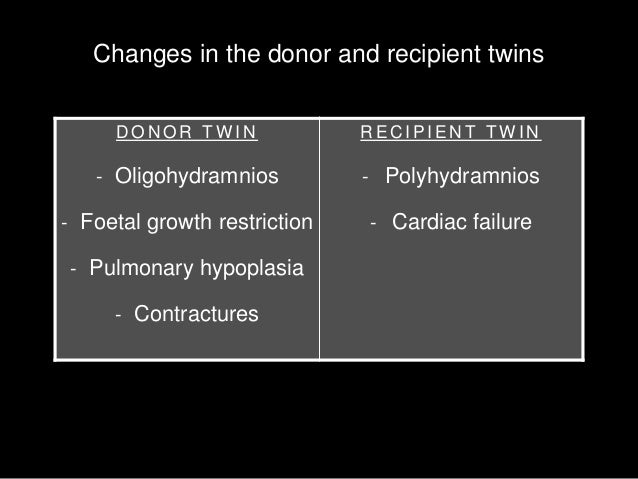



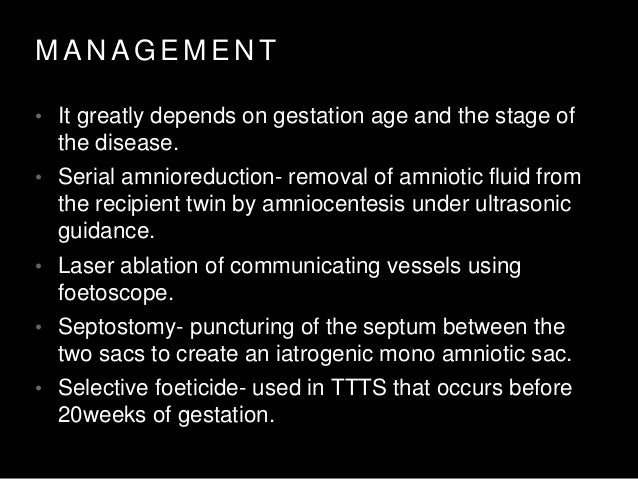


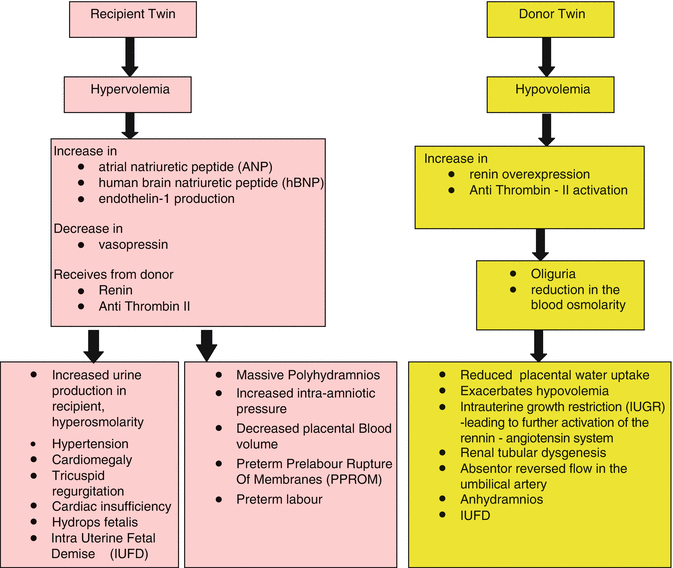

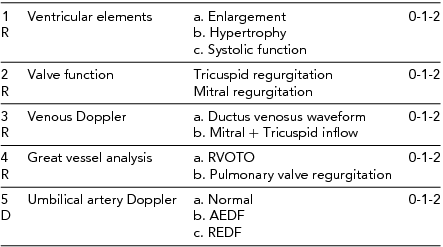
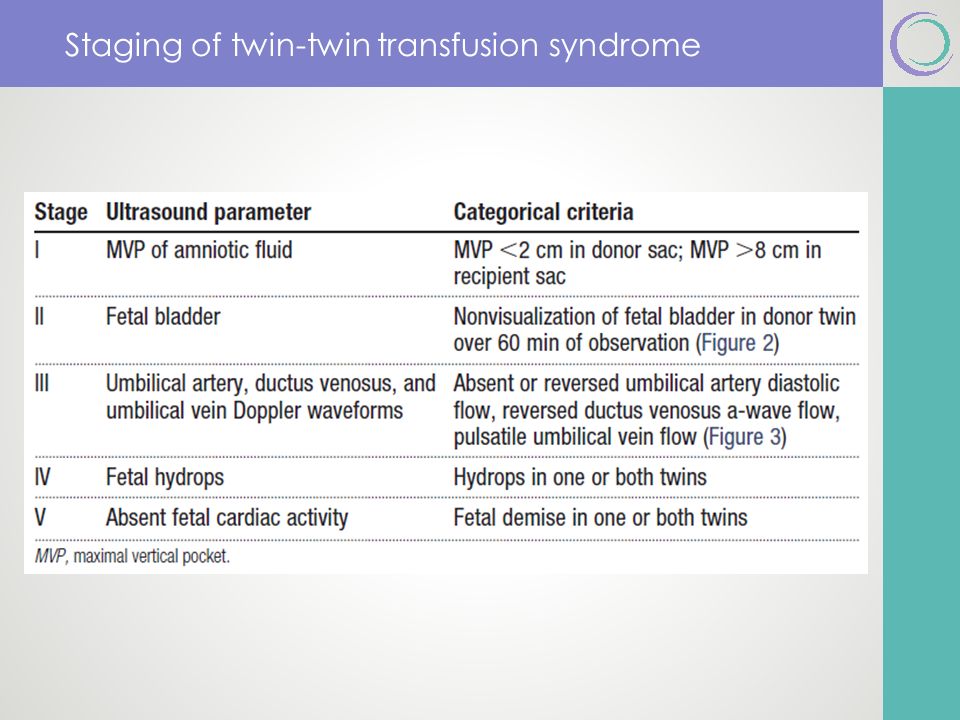



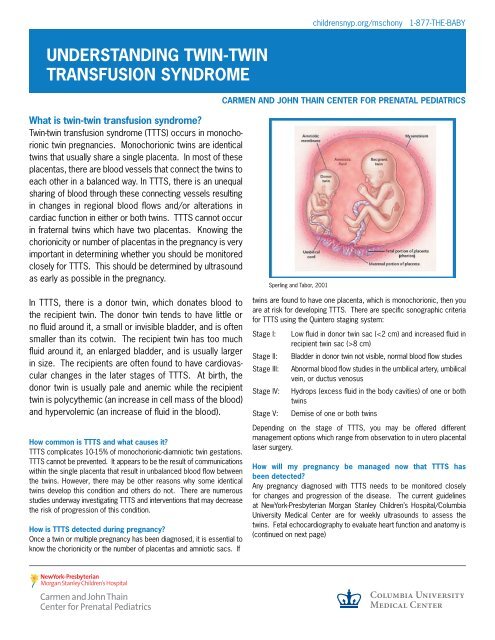






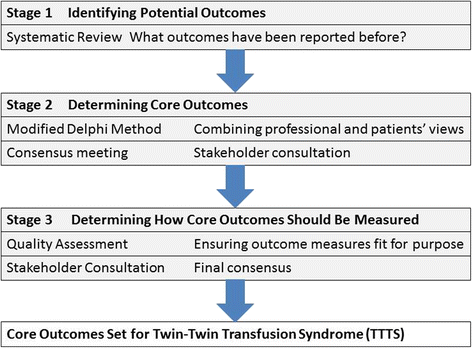



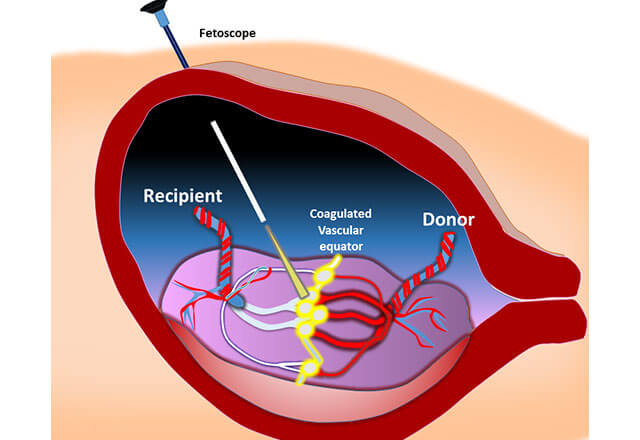


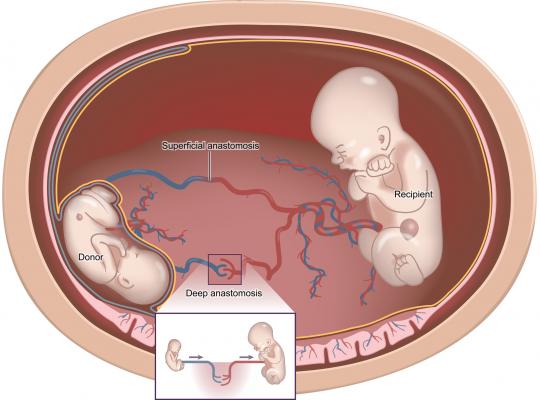


Post a Comment for "Twin Twin Transfusion Syndrome Criteria"